- Administrator
- Albums and Singles
 A combination of esoteric neofolk and electronic experimentation, Circulation of Light (Nathaniel Ritter of Kinit Her and Burial Hex, among others) sits nicely between those two genres. While I tend to find artists who overly favor one end of those two poles monotonous over time, Acheiropoeita does not have that problem in the slightest.
A combination of esoteric neofolk and electronic experimentation, Circulation of Light (Nathaniel Ritter of Kinit Her and Burial Hex, among others) sits nicely between those two genres. While I tend to find artists who overly favor one end of those two poles monotonous over time, Acheiropoeita does not have that problem in the slightest.
One asset of this album is the careful use of vocals, which can make or break this kind of work.Admittedly, neofolk that sticks to an overly skeletal arrangement focusing solely on vocals and acoustic instrumentation tends to wear on me over time.While Ritter's vocals can at times drift into the overly dramatic ("A Perfect Heart Is Like A Mirror" and "Patience I" are the clearest examples) it never goes too far, and instead is always grounded by the oblique atmospheres and textures.
Songs like the slow, string and piano-led"The Death Desire" pairs more traditional vocals with a guttural chanted layer, resulting in a bleak, somewhat menacing medieval sound throughout its duration, although augmented with an electronic sheen."Manifold Grace" is of similar ilk, though here focusing on xylophone-like chimes and dissonant throbs from far away.
On "Stone's Sail" and "Patience II", the focus is on less organic instrumentation, with the former conjuring dark, moody imagery and the latter having an elegant, almost regal quality to it. Closing "Dimmet" is perhaps the most out there, with disembodied tones and supernatural spaciousness enveloping a bassy electronic drone, closing the album on a somber note.
Dramatic and grandiose would be appropriate adjectives to describe Acheiropoeita, but in a definite positive sense.The music is imbued with a sense of pomp that adds to its impact rather than detracts, giving a powerful feeling on each of the tracks.The sweeping strings and electronics, with Ritter's distinctive voice, give a mystical, timeless quality to a style that too often seeks to stay rooted in the past.
samples:
 
Read More
- Administrator
- Albums and Singles
 This is the eponymous debut album from Andrea Belfi (percussion), BJ Nilsen (electronics), and Simon James Phillips (piano). Recorded live in a Berlin church. the album comes across as an isolating, but effective combination of these three different artists, coming together to produce something that sounds like none of them in particular, but a whole that has its own singular sound.
This is the eponymous debut album from Andrea Belfi (percussion), BJ Nilsen (electronics), and Simon James Phillips (piano). Recorded live in a Berlin church. the album comes across as an isolating, but effective combination of these three different artists, coming together to produce something that sounds like none of them in particular, but a whole that has its own singular sound.
The trio used the resonant space of the venue to excellent effect throughout The Swifter, with each piece bathed in a distinct, though natural reverb."End of Capstan Bars" leads off the album with a hollow, environmental clattering that has a distinct character that even the most advanced of digital reverbs could nary hope to accomplish.Because it does have such a natural quality, even when it is used heavily throughout the performance, it does not come across as cliché dark ambience.
The electronic creaking and popping textures of "End of Capstan Bars" are paired with more organic piano and brushed percussion, coming together as distinctly different take on minimalist jazz fusion."Neap Tide" has a repetitive piano and distant percussive sounds that are less musical and more environmental, having a sparse, yet beautiful arrangement.
"Swallow" is less about subtlety and instead focuses more on shambling and muffled percussion from Belfi, while Nilsen's electronic mangling comes out sounding like popping pop corn.Amidst a hollow, low frequency drone, piano and unconventional rhythms balance each other out in a strange, tense equilibrium, resulting in a surprisingly delicate sound before increasing in intensity in its latter moments.
"Wave Guidance Allows Three" is where the understated sensibility gets tossed by the wayside, with a grandiose, massive piano sound dominating, accentuated by percussion and what sounds like a simple rhythmic synth sequence.While the boisterous piano leads, it is soon deposed by the percussion taking the lead, locking everything into a vaguely krautrock groove while the piano piles up into a lush background texture.
This debut is intrinsically tied to its setting and performance, which may or may not be an important factor in future recordings.The isolationist, rhythmic quality to the sound is inviting, even though it is an obtuse approach to music.
samples:
 
Read More
- Administrator
- Albums and Singles
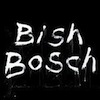 Atrocities, dictators and bodily functions, these are a few of Scott Walker’s favorite things. Throughout the dense lyrical jungle of Bish Bosch are examples of all these subjects amid dozens of other topics, all processed through Walker’s intense imagination. At times bewildering, amusing and disturbing, this is a magnificent album that continues from the same point where The Drift left off.
Atrocities, dictators and bodily functions, these are a few of Scott Walker’s favorite things. Throughout the dense lyrical jungle of Bish Bosch are examples of all these subjects amid dozens of other topics, all processed through Walker’s intense imagination. At times bewildering, amusing and disturbing, this is a magnificent album that continues from the same point where The Drift left off.
It is difficult to say exactly where I stand with it. I love it but there is a multitude of readings into the title alone (a combination of slang, Heironymous Bosch and a mythical female giant artist are implied on the album’s official site). I can only imagine that there will be years of analysis left in Walker’s words here. This is songwriting for an age of information overload as the thickets of puns, allusions and obscure facts bring to mind James Joyce’s work with Finnegans Wake. Walker moves through ideas like I would idly pass the time on Wikipedia, clicking the links until the dawning realization that I have gone so far without a breadcrumb trail to lead me back.
All the while, Walker is accompanied by many of his usual partners in crime along with a huge number of ancillary musicians, some of whom might only have seconds of play time on Bish Bosch. Yet, this is not the marathon run of kitchen sink instrumentation that that was present on The Drift. Here, the instrumentation is much more conventional but the playing and moods that are pulled out of the string section or guitar player are a step out of the ordinary. Going from weird concrète electronics to a vivacious carnival-style percussion, the players do an excellent job of accompanying such an uncompromising musical vision. Walker’s line on "Dimple" of "If you’re listening to this, you must have survived" could easily be directed to a participant in one of his recording sessions.
While the music is incredible in its own right, there is no denying that it is subservient to the words. Walker’s lyrics act like cues for sounds to be included in the music and Bish Bosch is as indebted to radio theater as it is to any of the other myriad of sources and inspirations that Walker has drawn on. Uses of the word "chisellers," "wobble," and "A room full of mice," are all accompanied by the appropriate sound effect; in particular, the latter has what sounds like a snare drum put into one of those little exercise wheels found in pet stores. The strong link between the words and the music means that traditional melody takes second stage to psychological and semantic impact. These songs are written in order to get deep inside each listener, not by a catchy hook but by possession.
There is a particularly scatological leaning to the words and sounds utilized; the oddness of Walker’s Donald Duck impression on The Drift is totally eclipsed by the line "The sphincter’s tooting our tune," accompanied by a flatulent synthesizer on "Corps de Blah," (the title possibly inspired by the phrase "corps de ballet," as Walker started work on this album while working on music for a ballet company). Meanwhile, references to a "wormy anus" and "If shit were music… you’d be a brass band" continue the theme in simultaneously cutting and hilarious ways.
These indelicate references and the countless mentions of mental illness and inhumane acts ("What kind of an unnatural son would do that to his own mother!?!") make the Heironymous Bosch connection in the album’s title most apparent during these early listening sessions. The intricate and varied horrors spill out of the speakers like one of Bosch’s compositions falls out of the canvas; just when I feel I have reached the depths of Walker’s unsettling (and frequently hilarious) imagery, he pushes the boundaries even further. "I’ve severed my reeking gonads and fed them to your shrunken face" is not the sort of lines expected from a 69-year-old former '60s icon, even one who has previously sang about punching a donkey in the streets of Galway. This line, alone with other remarks about genital mutilation or eunuchs, complete Walker’s idea of a Bitch (Bish) version of Bosch.
It remains difficult to discern what else is lurking beneath the surface of Bish Bosch at such an early time. Knowing how much I have discovered from (and still discover of) Walker’s previous albums over time, I am looking forward to dissecting Bish Bosch for years.
samples:
 
Read More
- Administrator
- Albums and Singles
 After a tantalizing two-year trickle of 12" singles and an EP, this unrelentingly bleak UK post-industrial duo have finally released a full album.  It was an event that I awaited with a mixture of anticipation and dread, however, as Raime had announced earlier that they had moved towards employing mostly live instrumentation, a decision that has historically not gone well for most electronic artists.  It certainly went well here though, as this is easily Raime's finest effort to date and a truly impressive evolution besides.
After a tantalizing two-year trickle of 12" singles and an EP, this unrelentingly bleak UK post-industrial duo have finally released a full album.  It was an event that I awaited with a mixture of anticipation and dread, however, as Raime had announced earlier that they had moved towards employing mostly live instrumentation, a decision that has historically not gone well for most electronic artists.  It certainly went well here though, as this is easily Raime's finest effort to date and a truly impressive evolution besides.
I have long been amazed by Raime's relative popularity, as it seems like they have always been quite intent on being as cold and alienating as possible since their inception.  Aside from the generally dank, claustrophobic, and airless feel of their work, they seem to be post-everything, eschewing anything resembling hooks or propulsive rhythms in favor of gloomy atmospheres and oddly shivering, slow motion beats.  Perversely, Quarter Turns takes some of those tendencies to an even further extreme while also unexpectedly dissipating the duo's characteristic suffocating darkness a bit.
On the "maximizing alienation" front, Joe Andrews and Tom Halstead have taken their already sparse, anxious beats into an even less danceable place this time around.  While a couple of pieces maintain the skittering, dubstep-inflected beats of their previous releases, like "The Last Foundry" (a superior reprise of The Raime EP's "This Foundry"), most of the others are based upon a straightforward, glacial thump that is far more "death march" than "dancefloor".  The opening "Passed Over Trail" is subversive in yet another way, dispensing with a beat entirely, but offering some awesomely shuddering and distressed sub-bass in its place.
While I certainly enjoy such acts of genre subversion and stylistic contrarianism, this album would get boring very fast if that was the sole extent of Raime's evolution.  Fortunately (and much to my surprise), the switch to live instrumentation provides the perfect counterbalance to the duo's escalating aversion to rhythm.  In fact, Raime do not make a single false, clumsy, or unnecessary instrumental move.  The mood, of course, remains as blackened as ever, but the subtle intrusion of human warmth and organic textures provides a necessary contrast that has been missing up until now, as the combination of sparse bleakness and bloodless artificiality was a bit too much for me to take in any kind of large dose.
The most beautiful manifestations of this new balance come at the end of the album.  In "Your Cast Will Tire," rattling, bowed guitar strings provide a sharp and visceral backbone while a mutant waltz beat and the coloration in the periphery create a deliciously escalating tension.  Then, in "The Dimming of Road and Rights," a simple violin motif unfolds over a lurching thump and an ominous repeating bass note.  While it does not replicate the satisfying dynamic trajectory of its predecessor, it maintains a fragile and eerie beauty for its entire duration and offers some extremely cool and creative flourishes besides, like the occasion snarl of something halfway between guttural human speech and guitar noise or the presence of a second beat that sounds too distant to actually be part of the song.
While those highlights admittedly occur quite deep into the album, Quarter Turns is a remarkably strong, varied, listenable, and intelligently sequenced whole.  There are a few instances where pieces take time to build, but the pay-off is always inevitably worth the wait as each of these seven songs are successful and memorable in their own way.  In most cases, that way is textural, as Andrews and Halstead are able to wrestle some impressively gnarled and scorched noises out of their instruments and they are clever enough to provide ample space for their ingeniously ravaged sounds to be properly heard and felt.  In fact,  I doubt there is anything that could be improved about this album.  It is almost certainly too skeletal and shadowy to offer much in the way of widespread appeal, but I am sure Raime have no interest in that at all–they accomplished exactly what they wanted to do masterfully, hauntingly, and distinctively.  This is a serious contender for my favorite album of the year.
 
 
Read More
- Administrator
- Albums and Singles
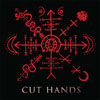 A surprisingly fast follow-up to the Afro Noise I album, Black Mamba already demonstrates an even further evolution of William Bennett's post-Whitehouse career, one that sees his work being utilized in documentaries about drugs and Snoop Lion (formerly Dogg).  While there was an overt intensity to the first album, via the rapid, claustrophobic drumming and dense atmospheres, here things are a bit more understated and pensive, but no less fascinating.
A surprisingly fast follow-up to the Afro Noise I album, Black Mamba already demonstrates an even further evolution of William Bennett's post-Whitehouse career, one that sees his work being utilized in documentaries about drugs and Snoop Lion (formerly Dogg).  While there was an overt intensity to the first album, via the rapid, claustrophobic drumming and dense atmospheres, here things are a bit more understated and pensive, but no less fascinating.
Susan Lawly/Very Friendly
Afro Noise I was a lightening rod for a significant amount of criticism regarding Bennett's appropriation of African and Haitian percussion as being exploitive for a Western artist.While I could never wrap my head around that fully, it felt influenced by those genres without co-opting them as his own.On Black Mamba, this is even less of a potential criticism:the percussion throughout often takes a back seat to layers of spacious synths, but never is it fully out of the picture.
The title track and "Erzulie D'en Tort" are more consistent with the first Cut Hands release, intermingling the different percussive instruments into complex poly-rhythmic tapestries that speed up and slow down with a natural grace and fervent intensity."Brown-Brown" also leans in similar directions, mixing the clattering rhythms together to create an intricate, hypnotic mix.
"Krokodilo," named for a lethal Russian drug (and featured in a recent documentary on the same), is a perfect example of the evolution to be heard on the album:the slower, more sparse rhythms are paired with synth strings that give it an almost Eastern European folk feel, perfectly suiting the subject matter."No Spare No Soul" piles on the African percussion, but mixed with bits of distorted and noisy bits of electronic noise that lead it into more dance floor oriented lands.
The more experimental moments are especially strong as well:both of the Nzambi lamentations have a dramatic, film score quality that stand out as sad, occasionally abrasively shrill moments that expertly convey a variety of moods."Kongo" is a short, wide-open piece that pairs metallic shaking with erratic drum blasts that sound like distant fire from a warlord’s AK.
The opening track is the one that stands out as the most potentially out of place:pulsing tones and hypnotic repetition with a calm, almost robotic female spoken word piece.Originally part of Bennett’s Neuro-Lingusitic Programming project, it is a departure from the otherwise percussion-heavy sounds, but also shows that Cut Hands is not locked into that specific niche either.
Black Mamba is not a drastic departure from Afro Noise I, but comes across as a more nuanced, evolved work that is definitely inspired by indigenous music of Africa, but further cements the notion that this is not an exploitation, but a celebration of the art and culture Bennett has a passion for.With a wider sonic palette that embraces synths and electronics as much as percussion, it’s a less intense, but overall richer experience.
samples:
Read More
- Administrator
- Albums and Singles
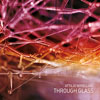 Novellino may be a relatively young artist in the world of minimalist sound, but these two distinct, but complimentary demonstrate that he is definitely not lacking experience or ability. In both a long-form single piece and a series of shorter compositions, he balances both the static and the dynamic to excellent effect.
Novellino may be a relatively young artist in the world of minimalist sound, but these two distinct, but complimentary demonstrate that he is definitely not lacking experience or ability. In both a long-form single piece and a series of shorter compositions, he balances both the static and the dynamic to excellent effect.
Through Glass is more consistent with a traditional album structure, with a series of ten shorter, but quite diverse pieces.The opening two, "A Footpath for Night Dancers" and "Sirens," lead off on the slightly noisier end of the spectrum, with both mixing buzzing and feedback peaks, maintaining a sense of nuance.The former's more dissonant moments mask an understated, underlying melody, while the latter’s addition of pseudo-strings and an overall aquatic feel make it stand out.
Pieces like the title track might not be quite as rough, but with delicate passages paired with digitally treated static, the balance between ugly and beautiful is ever shifting."Ex Butterfly" and "Her Red Shoes" are companion pieces that mostly stay away from dissonance entirely.The former opens up with layers of panning and swelling tones that eventually soar into a dramatic, almost regal flourish before falling into "Her Red Shoes," which brings in what sounds like guitar and an almost rhythmic low-end backing.
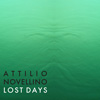
In contrast, the single piece EP Lost Days stays on more of a singular course throughout its over 20 minute duration.Initially an expansive drone that thickens and widens in power, eventually things become a vast, spacey expanse.There is a slow, calm beauty throughout, with different colors, light and dark, blending and intertwining amongst each other.The latter moments are where things begin to take a darker, more intense turn.
While these two were released separately and at different times, both works complement each other nicely, demonstrating that, though he may have a relatively small discography thus far, Novellino can work in both long and short-form contexts.While both are excellent, I did find myself drawn a bit more towards Through Glass because of its more diverse structure.Both are exceptional, however, and I am expecting great things from subsequent releases.
samples:
 
Read More
- Administrator
- Albums and Singles
 Moving from minimalism to free jazz for inspiration, this new album by Eleh is inspired by the later period of John Coltrane’s career. Although elements of these two pieces have been utilized during recent performances, these studio versions are described as "magnifications" of those live sketches. Far from being jazz, this is not the notes Eleh is not playing but the synthesis of new notes and frequencies from the standing waves and intervals emanating from the grooves on the record.
Moving from minimalism to free jazz for inspiration, this new album by Eleh is inspired by the later period of John Coltrane’s career. Although elements of these two pieces have been utilized during recent performances, these studio versions are described as "magnifications" of those live sketches. Far from being jazz, this is not the notes Eleh is not playing but the synthesis of new notes and frequencies from the standing waves and intervals emanating from the grooves on the record.
While previous works by Eleh have been inspired and dedicated to various minimalist composers, "Reflections on Living Space" uses Coltrane as its starting point. While there is very little in common with the Coltrane piece referenced by Eleh ("Living Space," recorded in 1965) in terms of style or approach, Eleh instead gets into the heart of Coltrane’s performance. In particular, the deep, spiritual resonances that run through this period of Coltrane’s music are mirrored in Eleh’s composition. A plateau of constant tone starts to break down into a complex interplay of different frequencies which brings to mind the harmonic and group interactions of Coltrane’s playing on its own and with other musicians.
Coltrane’s original piece brims with the same controlled, haunting beauty that permeated albums like A Love Supreme or Ascension and these same qualities were carried over into the compositions of La Monte Young and Terry Riley. For Eleh to go back and single out Coltrane like this makes total sense; to take the original inspiration and run with it again to see what comes out. This is return to this source makes more sense to me than going back to pre-minimalist composers like Anton Webern. The classical tradition offers something in terms of technique or something to rebel against, jazz offers something to feel.
On the other side of The Weight of Accumulation, "Spring Mornings 2012" finds Eleh returning to the less drone-focussed style explored on more recent releases. The effect is at its most dramatic with Eleh approaching the sort of dynamics I would more readily associate with Carsten Nicolai but with a very different angle taken on its delivery. Nicolai’s clean, mechanical sheen is replaced with something that is closer to a scientific recording of circadian rhythms or radio waves from space; fast, seemingly regular phenomena appearing amidst the slowly drifting background signal. There is an organic quality to this that is unique to Eleh. I wish I had a PA system to play this through because this strikes me as the sort of piece that should be played on as large a scale as possible.
The Weight of Accumulation is another strong release by someone who is easily one of the strongest composers working in electronic music today. It moves in a very different way to Coltrane but it hits all the same buttons for me.
 
Read More
- Administrator
- Albums and Singles
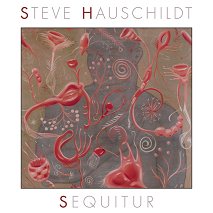 Steve Hauschildt steps out on Sequitur to make a case for himself as a talented producer of meticulously sequenced pop music. Like Emeralds' latest effort Just To Feel Anything, this record is a logical next step for Steve; rooted in new wave, techno, and a blend of genre exercise and timeless cohesion, and while it's common for ambient or electronic groups to evolve towards making pop-oriented albums, it's still a pleasant course that unfolds when handled with skill and subtlety.
Steve Hauschildt steps out on Sequitur to make a case for himself as a talented producer of meticulously sequenced pop music. Like Emeralds' latest effort Just To Feel Anything, this record is a logical next step for Steve; rooted in new wave, techno, and a blend of genre exercise and timeless cohesion, and while it's common for ambient or electronic groups to evolve towards making pop-oriented albums, it's still a pleasant course that unfolds when handled with skill and subtlety.
Sequitur's overly literal title is intended as a reference to 2011's Tragedy And Geometry, suggesting a natural conclusion to the ethereal, androgynous synth forms which characterized that record. The major contrast present in Sequitur that suggests a linear direction from that work is Hauschildt's vastly greater assortment of instruments and ideas on display. T&E was slightly pop-oriented minimalism, drawing all its melodies from the work of a single synthesizer and themes of hypersaturation and technology. Sequitur skips a step or two, jumping beyond the anticipatory revelations of "artist discovers verse-chorus songcraft," and heading straight for ambitious new ground, grafting his futurist stylings onto pop templates. It's the kind of forethought that suggests he's been working on these songs for far longer than I imagined.
For the most part, the pieces fit together. Standout tracks like "Interconnected" and "Constant Reminders" hit a nostalgic soft spot that perfectly blends Steve's unique sonic fingerprint with arpeggiated melodies, distorted guitars, drum machines, a vocoder (on the latter song) and an abundance of synthesized strings following familiar chord progressions like the theme song to a sci-fi cult classic. The breathtaking "Kept," meanwhile, ditches the percussion for cascades of ecstatic kosmische drone in a late-album highlight.
Hauschildt's cascading melodies assault the senses to the point of overwhelming, even as they would suggest otherwise. The polyrhythmic delays in the title track, for example, hit an apex at the two minute mark where there isn't a single spot unoccupied by sound. Every note and subdivision is filled with a pleasant blip or its fading echoes; the song reaches the last stage of agglutination where there's nothing left to add, after which the song dies out. The music's never harsh, but it is so unyielding that it borders on sensory overload. Steve presses on with this kind of additive style so often that when brief moments of silence do occur, they are all that much more welcome. It so happens that Sequitur's poppier songs—and the ones I enjoyed the most—are the songs that acknowledge how important those empty spaces are.
If I had to find one glaring problem with this album, it would be that Steve's weaker moments are on display in equal measure with his stronger ones. Tracks that don't stand out tend to retread the same ground, making for a pretty even split. This could be attributed to Hauschildt's obsession with sounding "pure"—which I would argue risks sacrificing a song's personality—but the better parts of the album share those same perfectionist qualities. They're just better, in a way I can't pinpoint. But that's the thing about pop; it thrives on those precious details. Hauschildt still hasn't quite found a niche for himself as a solo artist, but this is a promising leap forward. And at this rate it will take maybe one or two albums for Steve to perfect his formula.
samples:
 
Read More
 Steve Hauschildt steps out on Sequitur to make a case for himself as a talented producer of meticulously sequenced pop music. Like Emeralds' latest effort Just To Feel Anything, this record is a logical next step for Steve; rooted in new wave, techno, and a blend of genre exercise and timeless cohesion, and while it's common for ambient or electronic groups to evolve towards making pop-oriented albums, it's still a pleasant course that unfolds when handled with skill and subtlety.
Steve Hauschildt steps out on Sequitur to make a case for himself as a talented producer of meticulously sequenced pop music. Like Emeralds' latest effort Just To Feel Anything, this record is a logical next step for Steve; rooted in new wave, techno, and a blend of genre exercise and timeless cohesion, and while it's common for ambient or electronic groups to evolve towards making pop-oriented albums, it's still a pleasant course that unfolds when handled with skill and subtlety.
- Administrator
- Albums and Singles
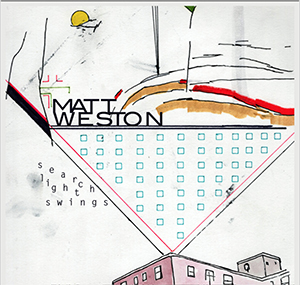 Matt Weston’s last release, the Organum-esque scrape and drone fest "Kidnapping Denials/Put on a Good Face" did an exemplary job at capturing him in his natural habitat as a percussionist, albeit a rather unconventional one. While that was based upon live recordings, his newest 7" is a bit more multi-instrumentalist and studio-centric in its approach. Made up of two rather brief pieces, it is a tantalizingly short yet fully engaging single.
Matt Weston’s last release, the Organum-esque scrape and drone fest "Kidnapping Denials/Put on a Good Face" did an exemplary job at capturing him in his natural habitat as a percussionist, albeit a rather unconventional one. While that was based upon live recordings, his newest 7" is a bit more multi-instrumentalist and studio-centric in its approach. Made up of two rather brief pieces, it is a tantalizingly short yet fully engaging single.
On the A side, "Searchlight Swings" is underscored by gargantuan, timpani like rhythms and the tell tale buzz of a guitar amplifier.From here he adds oddly tense bits of interference and alarm-like tones that cut through abrasively.By the end he has worked in sped-up voices and what could be a car alarm, resulting in an unsettlingly erratic, challenging and complex bit of music, all in the span of around three minutes.
For the flip side, "Is That Helicopter Over Our House?" is a somewhat less confrontational piece.Instead Weston works more with rudimentary beat boxes and eccentric synth tones in an idiosyncratic, and somewhat fun sounding work.On the whole it is more traditionally structured, and once the horn-like bits are brought in, feels like a lost pre-Mix Up Cabaret Voltaire outtake in the best possible way.
Weston works within the format of the 7" single very well here, pairing a more difficult, disquieting piece with a lighter, quirkily catchy one.Perhaps the greatest limitation is that there are really only a few minutes here, which only led to me wanting more to be added.Looking at his discography, it seems like solo albums are not really his thing, which is admittedly somewhat frustrating when I just wanted to hear more of this once the record was finished.As it stands though, it is a brilliant combination of two distinctly different pieces of music, but both bearing the mark of a truly unique composer and performer.
Read More
- Administrator
- Albums and Singles
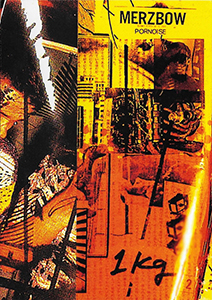 Pornoise 1 KG is somewhat of a landmark release in Masami Akita’s sprawling, ever expanding and complex discography. Recorded in 1984 and issued multiple times as a five-cassette set not long after, it represents one of the first long form collections of Merzbow to have been released. Reissued here on six CDs (including the separately released Pornoise Extra as disc six), it makes for an excellent snapshot of what Akita first started out doing, and hints at what would come later in his long career.
Pornoise 1 KG is somewhat of a landmark release in Masami Akita’s sprawling, ever expanding and complex discography. Recorded in 1984 and issued multiple times as a five-cassette set not long after, it represents one of the first long form collections of Merzbow to have been released. Reissued here on six CDs (including the separately released Pornoise Extra as disc six), it makes for an excellent snapshot of what Akita first started out doing, and hints at what would come later in his long career.
I have mentioned in multiple Merzbow reviews that, while Venerology was my introduction to his work and the world of noise, I have always favored his earlier releases in contrast to the purely harsh approach he started focusing on in the 1990s.Considering when this set was recorded, it was something I was eager to hear, and it has all of the greatness and shortcomings I could have expected for such a expansive collection.In his earliest works, Akita was heavily into manipulating tape loops, and that is something that can be heard throughout on this collection.Right on the first disc, "Loop Fuck/Obituary Part 1" is an exemplary work in this style.Overdriven loops of rhythm are layered on top of one another to create some sense of structure and composition, even if everything else in the mix is purely distorted and chaotically explosive.It is not hard to hear the seeds planted of what Kohei Gomi of Pain Jerk would start doing a few years later, either.
Loops are heavily featured in "Toy 69" a few discs later, with an odd mechanical crunch to them that makes for a more standout, less abrasive feel with a peppering of voice loops thrown in."Night Noise White" also has Akita building on overt loops of radio communications and droning electronics.At first it is rather repetitive, but as he transitions the sound to a more harsh noise oriented one rather than exclusively tape loops, the piece becomes noticeably more dynamic and varied.At times, however, this repetition is less engaging."UFO vs. British Army" ends with a nice bit of vintage Merzbow crunch and distortion, but the loop-centric repetition across the half-hour duration makes the journey to that conclusion a bit dull.
The other part of Akita's sound that was being utilized at this time was metal and junk percussion, and that also is nicely presented throughout these six discs."Penis Art is Microphone" is nice and chaotic from a rhythmic perspective, and evolves into a more electronic-based piece quite well while retaining the appropriate amount of metallic clang and bashing.In some cases he blends these two styles together extremely well.The squalling, loop-y noise that opens "Loop Fuck/Obituary Part 3" eventually relents to a clattering mass of percussion that sounds like a recorder left in a washing machine that was pushed down an exceptionally long staircase.
In his heavy use of loops, Akita also ends up blending in some more conventional sounding passages that verge on being considered musical."International Velvet," for instance, has some almost normal sounding bits of synthesizer placed throughout the otherwise distorted mix, and later on even a bit of what could be a Theremin popping up.Some actual drumming appears on "Komala-Lomata 1-3," with Akita never being able to fully escape his time as a Deep Purple tribute band drummer, but the piece eventually devolves into a mass of cheap drum machine and vintage industrial electronics."Paripunna-Purisa-Byan-Janatad," which concludes the sixth and final disc, is an especially odd entry.Propelled by a drum machine rhythm that can almost be described as funky, he casts out blasts of noise here and there, but by the end it becomes heavily built around a pure electronic pulse that results in something that sounds like the most radical deconstruction of synth pop that can be imagined, and that is a great thing.
Six hours of Merzbow is a lot for anything but a hardcore fan, but there is simply so many different styles and variations of Masami Akita's work to be heard on Pornoise 1 KG that it is rather easy to recommend.Sure, there are some warts, largely in the form of overly repetitive moments across these largely half-hour long pieces, but everything else:the junk rhythms, the crunchy distortion, and the strange flirtations with music, are all quite enjoyable.Considering the nature of these recordings, the transfer to digital also went very well, with a mastering job that keeps the grime that is supposed to be there, but not much in the way of unwanted analog artifacts.It can be weird and at times unpleasant, but what else should a Merzbow release be?
samples:
 
Read More


